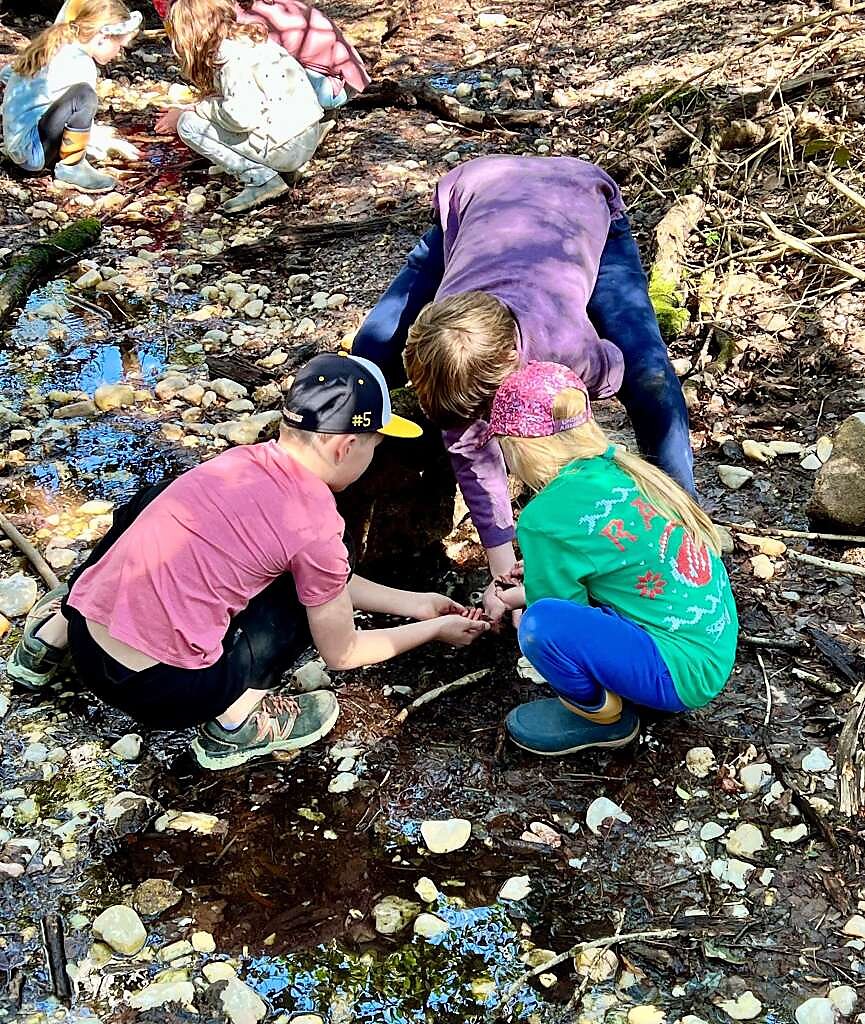For seven years, Amber Dawson homeschooled her kids while wishing for a different kind of school. “I just kept saying, ‘If there were a school like this, I would not homeschool,’” she recalls. She frequently dreamed of creating that school herself. Then a friend called her in May 2020 and said, “You’ve been talking about opening a school for years. Can you do it now?”
Her friend’s children, like so many others, couldn’t return to public school during the pandemic. Parents needed an in-person option. So Amber took the leap, and on February 8, 2021, Brompton Community School opened its doors in Fredericksburg, VA.
“To be honest, I don’t know if it hadn’t been for COVID if we ever would have opened,” Amber admits. “It always would have just been down the road someday.” However, what started as a pandemic necessity has evolved into a thriving school, serving approximately 90 students from kindergarten through eighth grade.
Everything about Brompton Community School is unique—right down to its location in a historic building that sits on 30 acres and backs up to a national park battlefield. With wooded areas, a creek, and an adjacent farm, it’s the perfect environment for the homelike, nature-based school Amber wanted to create.
Students arrive for a typical 8:30 to 3:15 school day that starts with a morning meeting, much like other schools. However, there’s a significant difference: Brompton kids spend approximately 60 percent of their day outdoors. Teachers lead reading lessons on a hill. Science classes venture into the woods to examine seeds. Fourth graders who are studying the Civil War walk through battlefields with park rangers.
The school has gardens and a native meadow, and they’re working toward their “green flag schools” designation through the National Wildlife Federation. They have a director of environmental and outdoor education who works with students as they tend the pollinator and vegetable gardens. Middle schoolers conduct creek testing on campus and also visit other creeks and watersheds in the area for comparison and to study ecosystems firsthand.
Another thing that sets the school apart is the “adventurous play”—about an hour and a half daily of kids climbing trees, hiking through the woods, rolling down hills, and digging in what they affectionately call “the mud pit,” a perpetually wet area fed by a natural spring running under the property. There’s no traditional playground equipment, and that’s intentional. Most kids adapt within about six weeks, even those who initially wonder, “What am I supposed to do out here?”
Students go outside in all weather, and the school provides all the outdoor gear they need: rain pants, rain jackets, fleece layers, winter hats, boots, and gloves. Everything stays at school. The staff washes it, repairs it when it gets torn in the woods, and ensures it’s always available. “The goal with that was, one, that everyone has the same thing,” she explains. “But also so that no kid would ever have an excuse not to go out. So that they can’t say, ‘Well, I can’t go out today because my raincoat’s in my car or I left my boots at home.’”
Both students and staff show strong retention year after year. With 15 full-time licensed Virginia teachers serving 90 students across small classes of around 12 students each, the school is nearing capacity. The kindergarten maintains a waitlist—next year’s list has 58 children for 14 spots.
Brompton opened too late for Amber’s oldest child to attend. But her middle child attended fourth through eighth grade; Amber says he complained about going to “his mom’s school” but now appreciates what he gained. Her youngest is four and will start kindergarten next year, so the school’s not going away. “There’s no way we’re not going to be open because I can’t homeschool young kids,” she says. “This is the only school I want for her.”



